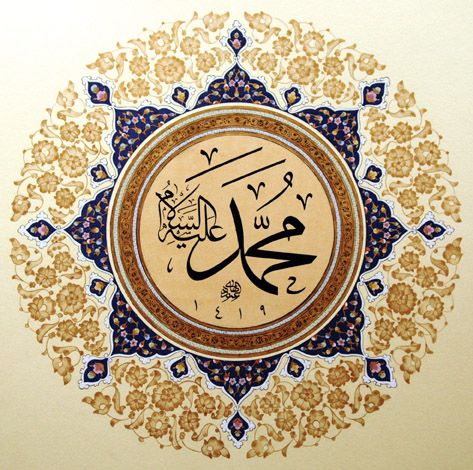
(Wikimedia Commons public domain image)
The manuscript plows forward:
Making Arabic the language of administration in the empire was part of a larger and very important process by which the Middle East became both Arab and, overwhelmingly, Muslim. The first Arab conquerors had been content to let the old bureaucracies from the Persian and Byzantine states continue to run things. But now, some Muslim thinkers wondered if there was not a specifically Islamic way of doing things and whether they ought to be following it. Naturally, when first they wanted to find Islamic solutions to the challenges posed to them by their radically changed circumstances, they looked to the Qur’an for guidance. The Qur’an is an impressive book that covers a wide range of issues. But it is of a finite length, and it was not systematized or complete or specific enough to answer every question that arose as the Arab or Islamic empire expanded. Questions of maritime law, for instance, that had never occupied center stage among desert Arabs now pressed for resolution. How was a Muslim to handle issues on which the Qur’an offered little or no guidance? There was no continuing revelation within Islam, no living prophet, and there was no pope with the authority to settle disputes.
Faced with this problem, the Muslims fell back upon an old Arab notion, the idea of sunna (“tradition,” “custom,” “usage”). Pre-Islamic Arabia had, in many ways, been remarkably conservative. Guidance was sought in the past, according to the custom of the community, as to how various questions had been coped with by ancestors. Information from the past was handed down from one generation to another by oral tradition.
Muslim Arab thinkers adopted the old, pre-Islamic way of discerning good from bad, wise from unwise. For them, sunna came to mean the established practice of the original Islamic community, particularly as it could be discerned in the lives and actions of the Prophet and his companions. Just as God’s book, the Qur’an, had been revealed in the past, so too, for the vast majority of Muslim thinkers, the ideal Islamic life had been lived in the past and was available for study. It had been lived by the Messenger of God himself. If he didn’t understand Islam, who did? If he hadn’t lived it fully and well, who ever had? Secondarily, that ideal Muslim life had been lived by those who had been privileged to know and observe the Prophet personally. Muhammad, the Qur’an taught, is a good example for the believers, a pattern for their conduct.[1] And his example is not limited to purely religious matters. Rather, somewhat like the prophets of the Latter-day Saints, Muhammad’s counsel and example were authoritative for all areas of human life, whether secular or sacred. “It is not for true believers—men or women—to take their choice in their affairs if God and His Messenger decree otherwise.”[2] The Prophet spoke for God upon the earth. “Those who swear fealty to thee swear fealty in truth to God.” “He that obeys the Messenger obeys God Himself.”[3]
[1] 33:21.
[2] 33:36.
[3] 4:80; compare 48:10. It isn’t difficult to find parallels to these ideas in the scriptures of the Latter-day Saints. See, for example, Matthew 10:40; Doctrine and Covenants 1:38; 68:4; 84:36-37; 89.











